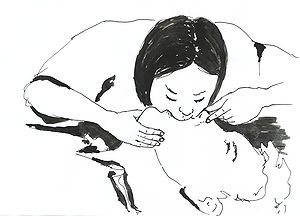
Image via Wikipedia
Published on HealthMad, Feb 20, 2011 Category – Health
Artificial respiration is defined as the act of assisting or stimulating respiration – a metabolic process referring to the overall exchange of gases in the body by pulmonary ventilation, external respiration, and internal respiration. This is use for a person who has ceased due to choking and electric shock.
If a person chokes on food or other objects and stops breathing – artificial respiration can be applied to save him. A rescuer should wipe out any fluid vomits, mucus or other objects from the mouth with fingers and he should be certain to reach into the throat with a finger or fingers to remove any object blocking the throat and he should remove clothing to expose the chest.
If the person has stopped breathing due to an electric shock – a rescuer should first find the electric source and switch off current by using non-conductive articles like a dry broom handle or dry rope before removing casualty from contact and start giving rescue breathing.
Artificial respiration should be given as first aid to the victims following some simple steps:
- Place the person on his back.
- Place hand or soft object under neck.
- Keep the head tilted back as far as possible.
- Grasp the angles of the jaw below the ears and lift the jaw so that it just forward. This will keep the tongue away from the back of the throat – so that air can get in.
- Pinch nose with your fingers and blow breath into mouth with smooth, steady action until the chest is felt of seen to rise.
- Remove your mouth. Allow lungs to empty. This action should be repeated at the normal breathing rate – example: 12-15 times a minute. The purpose is to make the chest move as it would normally.
- Lastly, contact physician or arrange for emergency medical care.
To read my other article about first aid and emergency procedures click Heart-Lung Resuscitation.
Artificial Respiration also can be applied when a person has stopped breathing from drowning or from other causes like heart arrest or cardiac arrest as a first aid. But a rescuer should not panic while he is giving rescue breathing to the victim.

























